|
Sicily and Sardinia are the largest islands of Italy. Great islands not only
for their area but also for the natural beauties, history, monuments and art,
as well as for the rich cuisine and great wines. Whites, reds and sweets -
including some good bubbles as well - Sicily and Sardinia offer a viticultural
and wine making richness of primary importance. Moreover, the two islands are
famous for the production of ancient wines of noble prestige: Marsala in
Sicily, Vernaccia di Oristano in Sardinia. Wines which lived alternate moments
of glory and oblivion, in recent times - thanks to the revaluation and the
precious job done by some producers - Marsala and Vernaccia di Oristano are
expressing unique and inimitable qualities again. Considered by many as
wines having an ancient taste, these two giants from Sicily and Sardinia
represent a sensorial exercise of remarkable complexity, as well as of
undeniably pleasure.
Ancient wines and, in the best interpretations, rare and prestigious, Marsala
Vergine and Vernaccia di Oristano are produced with pretty particular wine
making techniques. One of them consist in favoring oxidation of wine, something
strictly avoided and considered negative for table wines. Indeed, Marsala
Vergine and Vernaccia di Oristano make of oxidation one of their main
peculiarities, by even elevating oxidation to a noble quality. It should be
said these two wines are not just oxidation. The world of Marsala and
Vernaccia di Oristano - as well as all the other wines produced with the same
techniques - is rich and complex, nevertheless, wonderfully pleasing. A
complexity which can be appreciated at every phase of the tasting, from
appearance to taste, capable of giving unrepeatable and rare qualities like no
other wine.
The history of Marsala is fascinating and amazing, a characteristic it
certainly has in common with all the historical fortified wines produced in
Europe. A history having as protagonists English and Italian merchants,
sometimes challenging each other about the richness of their wineries or, like
they would say in Sicily, of their baglio. Marsala is in province of
Trapani and since ancient times it has played a fundamental role in the
commercial and trading activities of Sicily. Marsala was famous for its harbor,
which probably was what originated its name. It was in fact Arabs to name the
city Marsa Ali - that is “Ali's harbor” - or Marsa Aliyy, which
meaning is “big harbor”. The lovely Sicilian city has lived the commercial
fate of the wine produced by Woodhose, Ingham, Whitaker and Florio families, to
which have been later joined those of Rallo, Curatolo Arini and Pellegrino. The
names of some of these families are still today found in some bottles of
Marsala wine.
|
| 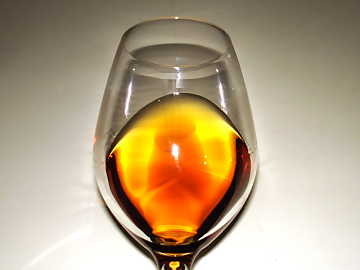 |
| The amber yellow color of Marsala Vergine |
|
Marsala, after the many revisions done on its production disciplinary, is
currently produced in the following styles: fine, superiore, superiore riserva,
vergine or soleras, vergine riserva or soleras riserva, vergine stravecchio or
soleras stravecchio and rubino. Grapes used for “white” Marsala are Grillo,
Catarratto, Inzolia and Damaschino, however it should be noticed that, of these
varieties, Grillo is considered to be the noblest of them all. Marsala
Rubino is produced with Perricone, Nero d'Avola and Nerello Mascalese. The
production of certain Marsala styles provides for the adding of mosto
cotto (cooked must), concentrated must or sifone (mistelle), in order
to get different colors and sweetness. Marsala Vergine is the only style in
which it is not allowed the adding of anything in order to change both color
and sweetness. In all Marsala styles is done fortification, that is the adding
of wine brandy, something increasing the alcohol by volume of the wine.
Sardinia, a land rich of excellent wines, is also the homeland of Vernaccia
di Oristano. This precious wine is sometimes considered to be similar to
Spanish Jerez because of the particular production technique and for the
development of the so called flor responsible of the remarkable
organoleptic complexity of these wines. As opposed to Marsala and Jerez - or
Sherry - Vernaccia di Oristano is not a fortified wine, however its natural
volume of alcohol must be at least 15%. This great Sardinian wine is produced
with the Vernaccia di Oristano grape, a variety found in the territory of
Sardinia only. Grape of ancient origins, some believe Vernaccia di Oristano was
cultivated in the island since the times of Phoenicians. This variety however
has strong and quite ancient roots, something also witnessed by its name.
Vernaccia in fact originates from Latin vernacula, a term referring to
something typical of a place, usually considered having a strong and historical
connection with a land. Another theory about its name is about Latin
vernum, that is “spring”.
The production of Vernaccia di Oristano is characterized by a method that,
generally speaking, is considered to be extremely negative by any wine maker.
The aging of this wine is in fact done is a partially filled wood barrel in
order to favor oxidation and the development of flor, a complex layer of
yeast visible on the surface of the wine and looking like a veil. This
formation of yeast strongly contributes to the development of Vernaccia di
Oristano's organoleptic qualities and, as it totally covers the surface of the
wine, flor offers a certain protection against excessive oxidation. With
time, the organoleptic qualities of Vernaccia di Oristano develop a more
complex character, something encouraging producers to start the selling of
their wines even after many years from harvesting, sometimes even more than ten
years.
In this tasting by contrast we will evaluate a Marsala Vergine, the only one to
be exclusively made as a dry style and released after at least five years from
harvesting, a characteristic being consistent with the aging periods usually
adopted for Vernaccia di Oristano. Production disciplinary of this Sardinian
wine provides for a minimum aging period of at least three years, however some
producers are used to start selling the wine even after five years, in order to
ensure a higher organoleptic complexity. The wines we will evaluate will
therefore be a Marsala Vergine and a Vernaccia di Oristano with at least five
years of aging. The tasting will be done by serving the wines at a temperature
of 15 °C (59 °F) in order to better favor the development of the complex
aromatic sensations.
|
 | |
| The deep golden yellow color
tending to amber of Vernaccia di Oristano | |
|
Let's pour the wines in the glasses and let's proceed with the evaluation of the
appearance. Let's start with the observation of Marsala Vergine, by tilting the
glass in order to allow the evaluation of color and nuances, observed towards
the edge of the wine. The color of Marsala Vergine - evaluated at the base of
the glass - is a brilliant and intense amber yellow, result of oxidation and the
long aging. Nuance shows the same amber color to which, sometimes, is added an
intense golden yellow. Let's not pass to the evaluation of Vernaccia di
Oristano. By observing the color, we will not notice substantial differences
from Marsala Vergine. The color of this great Sardinian wine is characterized by
brilliant amber tending to deep golden yellow. The same color is usually
observed in nuances, also in this case result of oxidation and aging.
The most exciting phase of the tasting certainly is the evaluation of aromas
that, in this style of wines, it is always rich of emotions and extraordinary
sensations. Marsala Vergine and Vernaccia di Oristano are no exception, of
course. Thanks to the particular techniques used for production, as well as the
impeccable use of oxidation, the olfactory profiles of these wines are among
the best ones, complex sensations impossible to find in other wines. To the
nose of the taster used to the evaluation of regular table wines, the olfactory
profile of Marsala and Vernaccia di Oristano can be incomprehensible, as
- this is undeniable - they require a better attention and a higher sensorial
effort. We are not however saying oxidation is a positive quality in wines. In
general terms, excessive oxidation is always considered a fault and,
undoubtedly, it compromises the finesse of wine. In fortified wines and aged
for a long time, oxidation - we will see - enriches the olfactory and gustatory
profile of these particular wines, also being a wanted and pleasing quality.
Before discussing the olfactory differences of the two wines, we should talk
about the so called rancho aroma, a term used for the tasting of Spanish
Jerez and it is produced by oxidation. In Italy it is usually called
Marsala aroma because it is typical of the famous Sicilian wine and,
when used for a table wine, it is considered a negative quality. It is not
simple to describe the rancho aroma: sometimes it reminds of toasted
hazelnut, indeed it is a more complex aroma. The main olfactory contrast of the
two wines is determined by this aroma. In general terms, it is stronger in
Vernaccia di Oristano than in Marsala, in both case, it is never unpleasant.
Other aromas which will be perceived from the glass will mainly be of dried
fruits and jams, with different intensity and nuances. For many aspects the
olfactory profiles of Marsala and Vernaccia di Oristano express common
qualities, however very different and such to require a strong attention in
order to perceive differences and contrasts to the nose.
In the mouth the two wines express different organoleptic qualities. The main
differences are mainly perceived to the burning impact of alcohol and
roundness, a sensation accentuated by alcohol as well. Marsala, a fortified
wine, to which is added wine brandy, has an average alcohol by volume of 19%,
whereas Vernaccia di Oristano has 16%. The attack of both wines is evidently
dry, the burning effect of alcohol is well perceptible, in particular in
Marsala. Both wines give to the taste an evident crispness caused by acidity,
essential element in order to ensure balance while avoiding an excessive
roundness. Marsala is generally perceived to the mouth with a higher roundness
than Vernaccia di Oristano, a quality being accentuated by alcohol as well. An
unexpected sensorial characteristic in this style of wines is astringency. It
is however a light sensation, any way perceptible, in particular in Marsala
Vergine.
The final phase of the tasting, in which is mainly evaluated the
taste-olfactory persistence, allows the perception of the good qualities of
Marsala Vergine and Vernaccia di Oristano. Also in this phase can be
appreciated the remarkable complexity of these wines, being similar in certain
aspects yet distant. The finish of Marsala Vergine generally has a good
persistence, giving to the mouth a pleasing crispness as well as sensations of
dried fruits, in particular dried fig and almond. Also in the finish of
Vernaccia di Oristano can be appreciated a good persistence and a pleasing
crispness, however with a drier impact than Marsala Vergine. The flavors
perceived to the mouth will be of dried fruits - just like the previous wine -
in particular dried fig, almond and hazelnut. Marsala Vergine and Vernaccia di
Oristano are two magnificent wines, pride of Italian wine making. Considered by
some as ancient wines, these two jewels made in the main two islands of
Italy have few rivals in terms of organoleptic complexity and potentials to
improve over time.
|


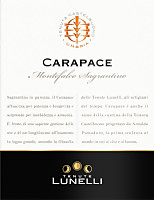
 Sagrantino
Sagrantino Intense ruby red and nuances of garnet red, little transparency.
Intense ruby red and nuances of garnet red, little transparency. Intense, clean, pleasing, refined and elegant, starts with hints of
blackberry, plum and black cherry followed by aromas of violet, blueberry,
vanilla, tobacco, chocolate, cinnamon, licorice, mace and menthol.
Intense, clean, pleasing, refined and elegant, starts with hints of
blackberry, plum and black cherry followed by aromas of violet, blueberry,
vanilla, tobacco, chocolate, cinnamon, licorice, mace and menthol.
 Tannic attack and however balanced by alcohol, full body, intense
flavors, agreeable.
Tannic attack and however balanced by alcohol, full body, intense
flavors, agreeable.
 Persistent finish with flavors of blackberry, plum and black cherry.
Persistent finish with flavors of blackberry, plum and black cherry. 24 months in cask, 12 months in bottle.
24 months in cask, 12 months in bottle. Game, Roasted meat, Braised and stewed meat, Hard cheese
Game, Roasted meat, Braised and stewed meat, Hard cheese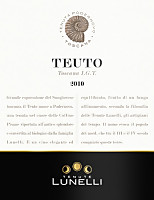
 Sangiovese (95%), Merlot (5%)
Sangiovese (95%), Merlot (5%) Brilliant ruby red and nuances of garnet red, moderate transparency.
Brilliant ruby red and nuances of garnet red, moderate transparency. Intense, clean, pleasing and refined, starts with hints of black
cherry, plum and violet followed by aromas of raspberry, blueberry,
tobacco, vanilla, chocolate, cinnamon and menthol.
Intense, clean, pleasing and refined, starts with hints of black
cherry, plum and violet followed by aromas of raspberry, blueberry,
tobacco, vanilla, chocolate, cinnamon and menthol.
 Tannic attack and however balanced by alcohol, good body, intense
flavors, pleasing crispness.
Tannic attack and however balanced by alcohol, good body, intense
flavors, pleasing crispness.
 Persistent finish with flavors of black cherry, plum and raspberry.
Persistent finish with flavors of black cherry, plum and raspberry. 24 months in cask, 12 months in bottle.
24 months in cask, 12 months in bottle. Broiled meat and barbecue, Roasted meat, Stewed meat with mushrooms, Hard cheese
Broiled meat and barbecue, Roasted meat, Stewed meat with mushrooms, Hard cheese
 Pinot Nero (80%), Chardonnay (20%)
Pinot Nero (80%), Chardonnay (20%) Intense salmon pink and nuances of salmon pink, moderate transparency,
fine and persistent perlage.
Intense salmon pink and nuances of salmon pink, moderate transparency,
fine and persistent perlage.
 Intense, clean, pleasing, refined and elegant, starts with hints of
cherry, raspberry and bread crust followed by aromas of strawberry,
tangerine, cyclamen, rose, yeast, black currant and plum.
Intense, clean, pleasing, refined and elegant, starts with hints of
cherry, raspberry and bread crust followed by aromas of strawberry,
tangerine, cyclamen, rose, yeast, black currant and plum.
 Effervescent and crisp attack, however balanced by alcohol, good body,
intense flavors, agreeable.
Effervescent and crisp attack, however balanced by alcohol, good body,
intense flavors, agreeable.
 Persistent finish with flavors of cherry, raspberry and strawberry.
Persistent finish with flavors of cherry, raspberry and strawberry. Refermented in bottle on its lees for at least 5 years.
Refermented in bottle on its lees for at least 5 years. Roasted white meat, Roasted fish, Stuffed pasta with meat
Roasted white meat, Roasted fish, Stuffed pasta with meat
 Pinot Nero
Pinot Nero Intense straw yellow and nuances of straw yellow, very transparent,
fine and persistent perlage.
Intense straw yellow and nuances of straw yellow, very transparent,
fine and persistent perlage.
 Intense, clean, pleasing, refined and elegant, starts with hints of
apple, plum and bread crust followed by aromas of raspberry, yeast,
hazelnut, honey, butter, tangerine, grapefruit, pear and mineral.
Intense, clean, pleasing, refined and elegant, starts with hints of
apple, plum and bread crust followed by aromas of raspberry, yeast,
hazelnut, honey, butter, tangerine, grapefruit, pear and mineral.
 Effervescent and crisp attack, however balanced by alcohol, full body,
intense flavors, agreeable.
Effervescent and crisp attack, however balanced by alcohol, full body,
intense flavors, agreeable.
 Very persistent finish with long flavors of apple, plum and grapefruit.
Very persistent finish with long flavors of apple, plum and grapefruit. Refermented in bottle on its lees for at least 6 years.
Refermented in bottle on its lees for at least 6 years. Roasted white meat, Roasted fish, Stewed fish, Stuffed pasta
Roasted white meat, Roasted fish, Stewed fish, Stuffed pasta
 Trebbiano di Lugana
Trebbiano di Lugana Pale straw yellow and nuances of greenish yellow, very transparent.
Pale straw yellow and nuances of greenish yellow, very transparent. Intense, clean, pleasing and refined, starts with hints of apple, plum
and hawthorn followed by aromas of pear, broom, almond, peach, pineapple
and citrus fruits.
Intense, clean, pleasing and refined, starts with hints of apple, plum
and hawthorn followed by aromas of pear, broom, almond, peach, pineapple
and citrus fruits.
 Crisp attack and however balanced by alcohol, good body, intense
flavors, agreeable.
Crisp attack and however balanced by alcohol, good body, intense
flavors, agreeable.
 Persistent finish with flavors of apple, plum and pear.
Persistent finish with flavors of apple, plum and pear. 5 months in steel tanks.
5 months in steel tanks. Fried fish, Pasta with fish, Broiled fish and crustaceans, Sauteed white meat
Fried fish, Pasta with fish, Broiled fish and crustaceans, Sauteed white meat
 Corvina, Corvinone, Rondinella
Corvina, Corvinone, Rondinella Ruby red color and nuances of garnet red, little transparency.
Ruby red color and nuances of garnet red, little transparency. Intense, clean, pleasing and refined, starts with hints of plum,
blackberry and black cherry followed by aromas of violet, blueberry,
vanilla, chocolate, tobacco, mace and menthol.
Intense, clean, pleasing and refined, starts with hints of plum,
blackberry and black cherry followed by aromas of violet, blueberry,
vanilla, chocolate, tobacco, mace and menthol.
 Tannic attack and however balanced by alcohol, full body, intense
flavors, pleasing roundness.
Tannic attack and however balanced by alcohol, full body, intense
flavors, pleasing roundness.
 Persistent finish with flavors of plum, blackberry and black cherry.
Persistent finish with flavors of plum, blackberry and black cherry. 24 months in bottle, 6 months in bottle.
24 months in bottle, 6 months in bottle. Game, Roasted meat, Stewed and braised meat, Hard cheese
Game, Roasted meat, Stewed and braised meat, Hard cheese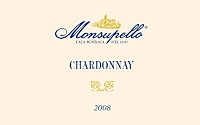
 Chardonnay
Chardonnay Intense straw yellow and nuances of straw yellow, very transparent.
Intense straw yellow and nuances of straw yellow, very transparent. Intense, clean, pleasing and refined, starts with hints of apple, plum
and banana followed by aromas of acacia, hawthorn, bread crust, pear,
pineapple and citrus fruits.
Intense, clean, pleasing and refined, starts with hints of apple, plum
and banana followed by aromas of acacia, hawthorn, bread crust, pear,
pineapple and citrus fruits.
 Crisp attack and however balanced by alcohol, good body, intense
flavors, agreeable.
Crisp attack and however balanced by alcohol, good body, intense
flavors, agreeable.
 Persistent finish with flavors of apple, plum and banana.
Persistent finish with flavors of apple, plum and banana. Aged in steel tanks.
Aged in steel tanks. Pasta with fish, Sauteed fish, Broiled crustaceans, Sauteed white meat
Pasta with fish, Sauteed fish, Broiled crustaceans, Sauteed white meat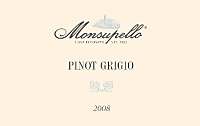
 Pinot Grigio
Pinot Grigio Brilliant greenish yellow and nuances of greenish yellow, very
transparent.
Brilliant greenish yellow and nuances of greenish yellow, very
transparent.
 Intense, clean, pleasing and refined, starts with hints of apple, pear
and citrus fruits followed by aromas of pear, hawthorn, peach, broom,
hazelnut and chamomile.
Intense, clean, pleasing and refined, starts with hints of apple, pear
and citrus fruits followed by aromas of pear, hawthorn, peach, broom,
hazelnut and chamomile.
 Crisp attack and however balanced by alcohol, good body, intense
flavors, agreeable.
Crisp attack and however balanced by alcohol, good body, intense
flavors, agreeable.
 Persistent finish with flavors of apple, plum and peach.
Persistent finish with flavors of apple, plum and peach. Ages in steel tanks.
Ages in steel tanks. Pasta and risotto with fish and crustaceans, Sauteed fish, Sauteed white meat, Dairy products
Pasta and risotto with fish and crustaceans, Sauteed fish, Sauteed white meat, Dairy products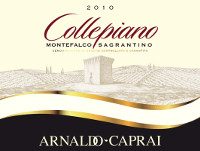
 Sagrantino
Sagrantino Deep ruby red and nuances of garnet red, little transparency.
Deep ruby red and nuances of garnet red, little transparency. Intense, clean, pleasing, refined and elegant, starts with hints of
blackberry, black cherry and violet followed by aromas of plum, blueberry,
vanilla, tobacco, cinnamon, peony, mace, pink pepper, cinnamon and menthol.
Intense, clean, pleasing, refined and elegant, starts with hints of
blackberry, black cherry and violet followed by aromas of plum, blueberry,
vanilla, tobacco, cinnamon, peony, mace, pink pepper, cinnamon and menthol.
 Tannic attack and however balanced by alcohol, full body, intense
flavors, agreeable.
Tannic attack and however balanced by alcohol, full body, intense
flavors, agreeable.
 Very persistent finish with long flavors of blackberry, black cherry
and blueberry.
Very persistent finish with long flavors of blackberry, black cherry
and blueberry.
 22 months in barrique, 6 months in bottle.
22 months in barrique, 6 months in bottle. Game, Roasted meat, Braised and stewed meat, Hard cheese
Game, Roasted meat, Braised and stewed meat, Hard cheese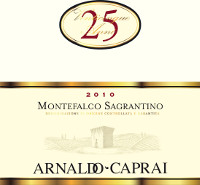
 Sagrantino
Sagrantino Deep ruby red and nuances of garnet red, little transparency.
Deep ruby red and nuances of garnet red, little transparency. Intense, clean, pleasing, refined and elegant, starts with hints of
blackberry, black cherry and blueberry followed by aromas of violet, plum,
vanilla, tobacco, peony, chocolate, pink pepper, cinnamon, leather, mace
and menthol.
Intense, clean, pleasing, refined and elegant, starts with hints of
blackberry, black cherry and blueberry followed by aromas of violet, plum,
vanilla, tobacco, peony, chocolate, pink pepper, cinnamon, leather, mace
and menthol.
 Tannic attack and however balanced by alcohol, full body, intense
flavors, agreeable.
Tannic attack and however balanced by alcohol, full body, intense
flavors, agreeable.
 Very persistent finish with long flavors of blackberry, black cherry
and plum.
Very persistent finish with long flavors of blackberry, black cherry
and plum.
 24 months in barrique, 8 months in bottle.
24 months in barrique, 8 months in bottle. Game, Roasted meat, Stewed and braised meat, Hard cheese
Game, Roasted meat, Stewed and braised meat, Hard cheese
